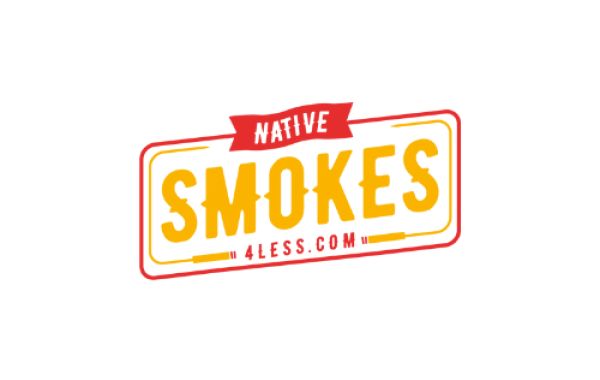If you had told someone a decade ago that tiny, tobacco-free pouches would become the next big thing in the nicotine world, they might have laughed in your face—right before lighting up a cigarette or stuffing their lip with traditional dip. But here we are. And the story of how nicotine pouches, particularly Zyn, went from relative obscurity to becoming a cultural phenomenon is as fascinating as it is unexpected.
Like any great underdog story, the rise of nicotine pouches didn’t happen overnight. It took a perfect storm of innovation, shifting consumer preferences, and a little bit of rebellion against the old ways of getting a nicotine fix. But to really appreciate how Zyn became a household name, we have to go back to the beginning.
How It All Started
For as long as nicotine has been around, people have been trying to find new ways to consume it. Smoking was king for centuries, but as health concerns mounted, alternatives started cropping up. Chewing tobacco, cigars, snuff, nicotine gum, patches—each had its moment. But none of them fully captured the satisfaction of smoking while also addressing the growing demand for discreet and smoke-free options.
Then, at some point in the early 2010s, a group of Swedish innovators—yes, Sweden, home of the world’s most efficient furniture and their iconic snus—had an idea. What if you could deliver nicotine in a way that was as satisfying as traditional oral tobacco but without the downsides? No spit, no tobacco leaf, no social stigma. Just a clean, convenient pouch that packed a punch.
Zyn hit the market, and while the world didn’t immediately take notice, a few people in the know saw its potential. The product was small but mighty. It had no smell, no mess, and no need to run outside in the middle of a dinner party just to get a nicotine fix. And most importantly, it was discreet enough to use anywhere—whether you were in a meeting, on a plane, or just didn’t feel like announcing to the world that you needed a hit of nicotine.
The Impending Cultural Shift
For a while, Zyn and other nicotine pouches were something of a well-kept secret. The early adopters—people who had either grown tired of traditional tobacco or just wanted a sleeker way to consume nicotine—loved them. But it wasn’t until social trends began to change that nicotine pouches really started taking off.
A massive factor in their rise was the decline of smoking. Decades of anti-smoking campaigns, coupled with increasingly strict regulations, had pushed cigarettes further and further to the fringes. What was once a universal habit—synonymous with old Hollywood glamour and rugged masculinity—had become something you had to step twenty feet away from a building to do. Even vaping, which had once been heralded as the future, started running into its own set of issues—government crackdowns, social stigma, and the dreaded "cloud chasers" who turned every sidewalk into a fog bank.
Adapting to changes
But here’s the thing about nicotine users: they don’t just disappear. They adapt. And as cigarettes lost their grip on the culture and vaping faced increased scrutiny, nicotine pouches quietly slipped into the mainstream. They weren’t flashy. They didn’t need elaborate rigs, giant plumes of vapor, or constant recharging. They just worked. Discreet, portable, and mess-free, they gave nicotine users a way to keep their ritual alive without the baggage that came with older methods.
Another major shift? The wellness movement. The modern consumer is all about reducing harm, cutting out the unnecessary, and making smarter choices. People who might have once reached for a pack of cigarettes started looking for alternatives that fit better with their active, health-conscious lifestyles. Nicotine pouches, with their tobacco-free formula and lack of smoke or combustion, presented a cleaner option. It wasn’t about quitting nicotine altogether—it was about upgrading the experience.
Retailers caught on quickly. It wasn’t just convenience stores and gas stations stocking up—specialty retailers that once focused on traditional tobacco started offering nicotine pouches alongside their usual products. If you check out Native Smokes Canada, for example, you’ll see how even established tobacco sellers have embraced the shift, catering to customers who want more modern alternatives.
The Rise of “Zynfluencers”
Now, here’s where things get interesting. If you spend any time on social media, particularly TikTok and Instagram, you might have noticed something: Zyn pouches have an almost cult-like following. Users aren’t just buying them—they’re showcasing them. Stacking their cans like trophies. Creating memes. Posting about their favorite flavors.
This was something that no previous nicotine product had really accomplished. Sure, there were smoking ads back in the day, and vaping had its own little counterculture, but Zyn was different. It was a status symbol, a lifestyle product, almost like the nicotine equivalent of an energy drink.
Suddenly, being a “Zynfluencer” was a thing. People were flexing their pouches in videos, talking about their favorite strengths, and making entire content series dedicated to the product. The fact that nicotine pouches were smoke-free made them easier to promote than traditional tobacco, and the branding—sleek, modern, and slightly rebellious—played right into the social media generation’s aesthetic.
The Appeal of the Future
Beyond just the hype, nicotine pouches offered something that their predecessors never could: a future-forward approach to nicotine consumption. No tar, no carcinogenic byproducts from combustion, no lingering odors. It wasn’t just about looking cool—it was about convenience, cleanliness, and control.
For many users, Zyn wasn’t just a nicotine product; it was a statement. It said, “I want my nicotine, but I don’t want the baggage that comes with traditional tobacco.” And as more people leaned into that mindset, nicotine pouches only grew in popularity.
The Business Boom
Of course, with popularity comes competition. It didn’t take long for other companies to notice the gold rush happening in the nicotine pouch industry. Brands like VELO, On!, and Rogue started popping up, each trying to carve out their own piece of the market. But Zyn had a head start, a loyal following, and a name that had practically become synonymous with nicotine pouches.
Stores started dedicating entire sections to them. Gas stations, once dominated by shelves of cigarettes and chewing tobacco, were now featuring racks of neatly stacked cans of Zyn in every flavor imaginable. Online retailers began offering bulk discounts, subscription services, and limited-edition flavors. The industry was booming.
And the numbers backed it up. Sales skyrocketed, with nicotine pouch use growing exponentially year after year. What had once been a niche product was now a major player in the nicotine industry, with no signs of slowing down.
The Future of Nicotine Pouches
So, what’s next? If history has taught us anything, it’s that the nicotine industry never stays stagnant. Products evolve, consumer preferences shift, and regulations play an ever-present role in shaping the market. But if the rise of nicotine pouches has shown us one thing, it’s that people are looking for alternatives—options that fit their lifestyle without the drawbacks of traditional tobacco.
Zyn and its competitors have already cemented their place in the nicotine world, but there’s still room for innovation. New flavors, new formats, new ways to enhance the experience. And as long as people continue to seek out better, cleaner, and more convenient ways to enjoy nicotine, the pouch revolution isn’t going anywhere.
One thing is for sure: the days of nicotine being limited to just smoking or dipping are over. The future is here, and it comes in a tiny, perfectly packed pouch.








